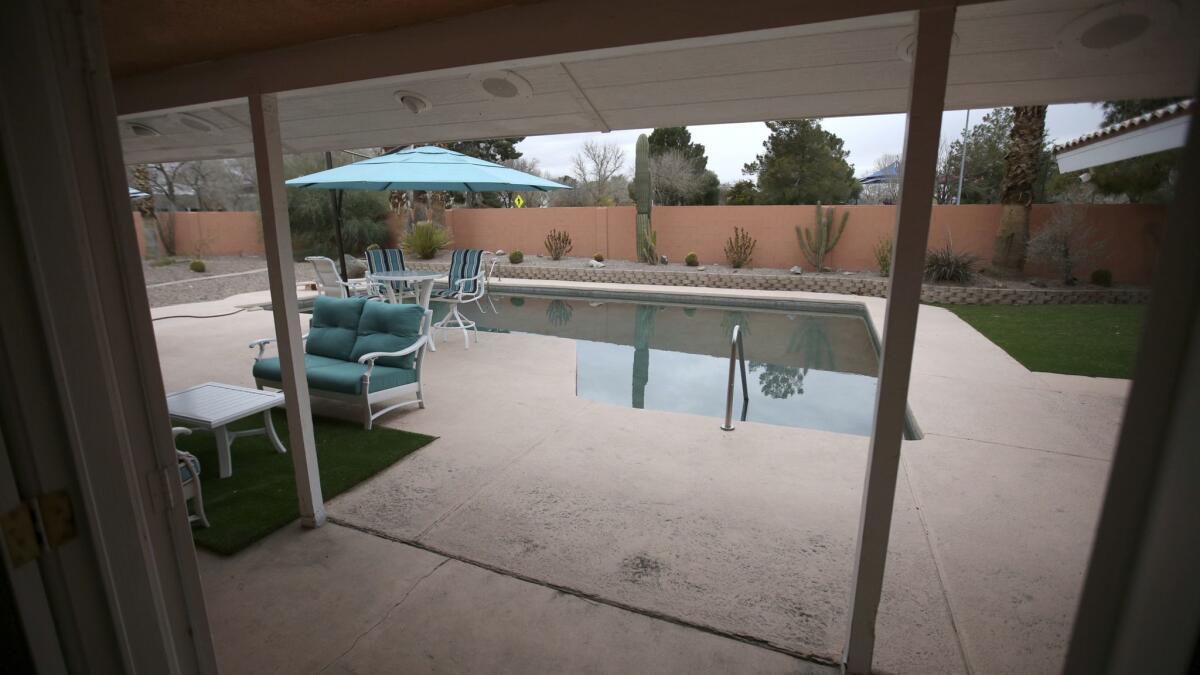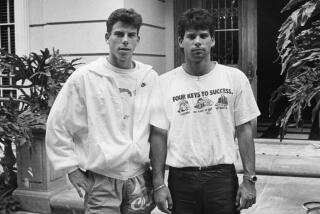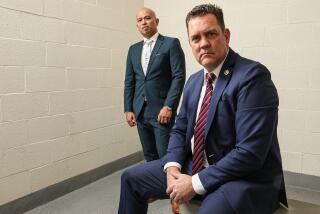An infamous mobster’s home was up for sale in Vegas. Buyers made an offer. Who could refuse?
Shannon Smith knew this would be unlike any home he’d ever sold.
Prospective buyers peppered him with questions: Did anyone get murdered here? Are there diamonds and cash hidden in the walls? Are there bodies buried in the yard?
“I don’t know. Buy the house and see,” he’d tell them. “Get some metal detectors. Knock down the walls.”
Smith, a 39-year-old real estate agent and broker, said they’d nod and shake their heads. They’d walk through the home’s floor plan and look up at the mirrored ceiling in the front room. They’d note the smoked mirrors in the master bedroom and along a wall by the front door. A small panel in a closet bore closer inspection.
The house might’ve been a terrestrial 2,392 square feet, but the space for imagination was limitless. Cocktails in ice-filled glasses. Hushed conversations about hits and heists. Money and power cloaked in pressed suits.

It once belonged to the late Tony “The Ant” Spilotro — an infamous mobster who reputedly oversaw the Chicago Mafia’s considerable interests in Las Vegas and was portrayed as Nicky Santoro in Martin Scorsese’s film, “Casino.” The house has changed hands a few times since Spilotro first owned it in the 1970s, but like most mob-related things, memories run long and nobody really ever forgets.
The last owner, Ethel Guntharp, said she knew of Spilotro’s past but didn’t really care much about it. For her, it was just a home — even if sometimes she noticed the occasional car driving by to check it out. She didn’t want to say much more.
“I knew who he was,” she said. “And I knew that would draw interest.”
Smith said the house was on the market for a week and sold on Saturday — with escrow likely to close next month. There were about 30 showings for the property, he estimated.
Yes, he said, most were serious buyers who didn’t blink at the $419,000 asking price. No, buyers were not required to pay for it with suitcases full of cash. Yes, the new owners wished to not be identified. No, the buyers weren’t in the witness protection program.
But they did check out the house one last time Saturday afternoon before signing some paperwork.
The interior had been decked out with a pool table between the kitchen and the dining room. An orange couch and a large flat-screen television dominated the living room. In the corner, a bar with smoked glass tops fed the image of a bygone era of mobster rule in Sin City.
Michael Green, associate professor of history at the University of Nevada, Las Vegas, said he used to live near Spilotro when the house was first built in 1974. He said the running joke was that it was the safest neighborhood in Vegas because Spilotro was under constant surveillance by the FBI and local police.
“When he moved in, it was a newer and more elite neighborhood,” Green said. “It’s in the heart of Paradise township and they were the nice homes. Today, the cachet of nice homes would be in Summerlin and Green Valley, and I suspect he would live in one of those neighborhoods.”
During Spilotro’s heyday in Las Vegas, Green said, he was the first real high-profile street mobster, as opposed to those operating casinos.
And according to the Mob Museum in Las Vegas, he achieved a lot of notoriety between the mid-1970s and early 1980s as a gangster who protected the skim on casino cash profits for mob bosses in the Midwest. But he also was embarking on side gigs that involved numerous robberies at the hands of his Hole in the Wall Gang. In 1976, he opened a pawn shop to keep the acquired stolen property.
Green said local media covered his multiple arrests regularly — though he didn’t think Spilotro cared if he was famous or not for them.
Spilotro regularly beat charges leveled against him and was represented by Oscar Goodman, the lawyer who later became mayor of Las Vegas. At the time of his death, he was set to face charges that he’d run a burglary, extortion and arson ring and had been awaiting trial on charges that he violated the civil rights of a government informant by having him killed.

Spilotro had been implicated in numerous killings, and was charged with murder three times. But his sole conviction came from using false information on a loan application — a crime that resulted in a fine of $1.
A lot has changed since then. Spilotro was eventually killed and was found buried along with his brother in an Indiana cornfield in 1986. Today, the ghosts of organized crime are mostly contained within the Mob Museum downtown. Goodman sometimes tells stories at his steakhouse of the old days of gangsters running the town. And the Plaza Hotel and Casino launched a musical revue called “A Mob Story” that features dancing and some comedic touches.
Spilotro’s neighborhood is a little more worn now, having weathered decades of booms and busts. Since he lived there, the neighborhood has been absorbed by development that has helped Clark County grow to 2.2 million people. It wasn’t even 500,000 in 1980, according to the census.
Homes on the street still vary in flamboyant colors and styles, including powder blue and mint green. The Spilotro home featured a salmon-tinged stucco exterior — with white trim. The red-tile roof was faded to a near-white as well.
Smith said very few things are original in the home now. A couple of doors. The smoked mirrors, of course. The pool — though it had been upgraded with a new bottom — was original. The backyard was spacious, with a lot of open area covered by rock and dotted with cactus and palm trees. Decking and a patio set were placed near a barbecue. A park bench rested on some green turf — a backyard set up for entertaining.

Did Spilotro entertain in the backyard? Possibly, Smith said. The new buyers, who had checked out most of the house, discovered an outdoor closet that looked like it would house pool supplies or toys. Smith stood with them as they opened it up slowly.
Inside, it yielded the mundane trappings of a normal, middle-class life: a few yard supplies, some trash bags and a couple of tools. No guns. No bullets. No claw hammers.
And no — not even a vise grip.
More to Read
Start your day right
Sign up for Essential California for news, features and recommendations from the L.A. Times and beyond in your inbox six days a week.
You may occasionally receive promotional content from the Los Angeles Times.







